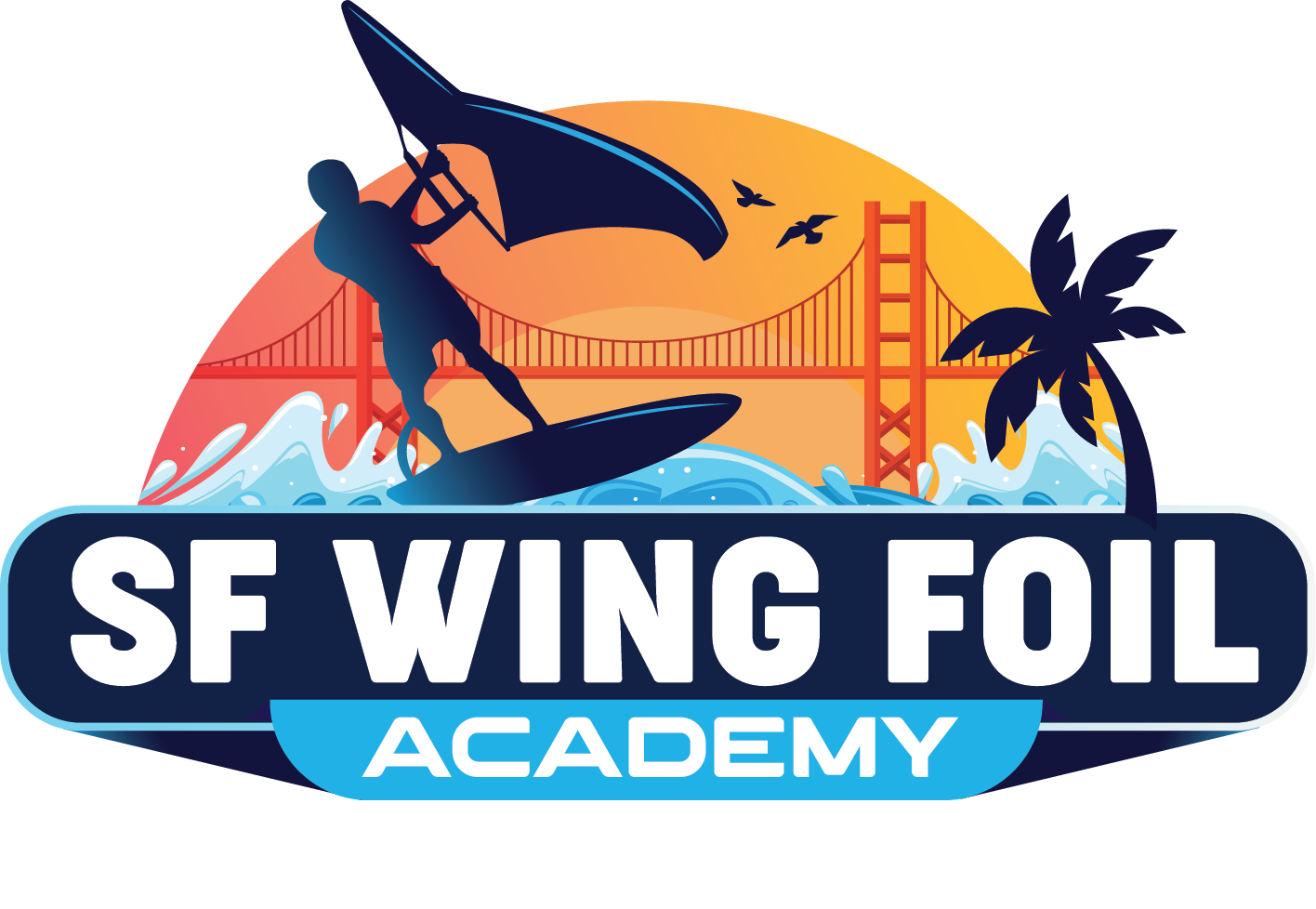In the shadow of the Golden Gate Bridge, where San Francisco Bay’s legendary winds have shaped maritime history for over a century, a new chapter in American water sports is being written. The US Wingfoil Championship, hosted by the prestigious Saint Francis Yacht Club and utilizing the iconic waters around Crissy Field, represents more than just another sailing competition—it marks the formal recognition of wingfoiling as a significant force in American sailing culture.
The Birth of a National Championship
The inaugural US Wingfoil Championship took place in 2024, drawing more than 40 athletes ranging in age from 13 to over 50, establishing itself as a groundbreaking event in the sport’s evolution. This inaugural championship gave the best wingfoil athletes a national platform to showcase their skills before an American audience, filling a crucial gap in the competitive landscape of this rapidly growing discipline.
The timing of this championship reflects the sport’s remarkable growth trajectory. What began as an experimental fusion of windsurfing and kitesurfing technologies has evolved into a distinct discipline worthy of its own national championship. The decision to establish this competition at Saint Francis Yacht Club was no accident—it leveraged the club’s century-long tradition of hosting world-class sailing events while embracing the cutting-edge nature of wingfoiling.
Saint Francis Yacht Club: The Perfect Host
Founded in 1927, Saint Francis Yacht Club (StFYC) has grown to become a beacon for sailors from around the world, known for its rich history, stunning location, and vibrant sailing community. Nestled on the edge of San Francisco Bay with sweeping views of the Golden Gate Bridge, the St. Francis Yacht Club stands as a beacon of American sailing excellence.
The club’s selection as host venue represents a natural evolution of its mission. Each year, StFYC’s top race management team hosts 130 days of competition or more, including national and international sailing championships for everything from classics to kiteboards. This extensive experience in managing diverse sailing disciplines positioned the club perfectly to embrace wingfoiling’s unique requirements.
StFYC has been at the forefront of wingfoiling development, offering courses in this class for junior sailors and hosting the first WingFoiling Pacific Coast Championship in 2023. This grassroots involvement in the sport’s development demonstrates the club’s commitment to nurturing emerging disciplines rather than simply capitalizing on established ones.
The Significance of Crissy Field
The choice of Crissy Field as the competition venue carries profound symbolic and practical significance. This historic location, with its unobstructed views of the Golden Gate Bridge and access to San Francisco Bay’s famous winds, provides an iconic backdrop that elevates the championship beyond mere athletic competition to cultural event status.
Competitors are tested by various racing formats, from short course buoy and slalom racing in the shadow of the Golden Gate Bridge, to distance racing on a multiple mile course spanning San Francisco Bay, from Crissy Field to the Berkeley Pier. This diverse course layout showcases both the technical precision required for tight buoy racing and the endurance demanded by distance competition.
Crissy Field’s reputation in the windsurfing community adds gravitas to the wingfoiling championship. Crissy Field has a reputation as one of the toughest places to sail on San Francisco Bay, and it has earned it. This challenging environment ensures that champions crowned here have proven themselves in conditions that demand the highest levels of skill and mental fortitude.
The Cultural Impact
The establishment of a national wingfoiling championship at such a prestigious venue represents a cultural milestone for the sport. It signals wingfoiling’s transition from experimental activity to legitimate sailing discipline, complete with organized competition structure and national recognition.
Locally, the sport was developed by a small group of dedicated adrenalin junkies including former world kiteboard champion Johnny Heineken, who resides in Corte Madera. The championship honors these pioneers while providing a platform for the sport’s next generation to showcase their skills on a national stage.
The age diversity of competitors—ranging from 13 to over 50—demonstrates wingfoiling’s broad appeal and accessibility. This inclusivity reflects the sport’s democratic nature, where technique and skill matter more than raw physical power, allowing athletes across age groups to compete meaningfully.
Technical Innovation and Competition Format
The championship format reflects wingfoiling’s technical sophistication and diverse skill requirements. On Thursday, June 19, the day prior to the official start of competition, StFYC also hosts a Global Wingsports Association (GWA) Surf-Freestyle event, designed to showcase the highest levels of trick performance. This multi-discipline approach recognizes that wingfoiling encompasses racing, freestyle, and wave riding elements.
The integration of different racing formats—from technical buoy courses to long-distance challenges—tests the complete range of wingfoiling skills. Short course racing demands precision, quick decision-making, and tactical awareness, while distance racing requires endurance, strategic planning, and equipment optimization.
Educational and Development Impact
Beyond competition, the championship serves an important educational function. StFYC offers wingfoiling classes open to sailors of all levels, ages 12-18, providing a pathway for sailors who want to learn how to hydrofoil or continue improving their skill. The championship provides inspiration and goals for these developing athletes while demonstrating the sport’s competitive potential.
The club’s commitment to youth development in wingfoiling represents a long-term investment in the sport’s future. By establishing both educational programs and high-level competition, Saint Francis Yacht Club is creating a complete pathway from beginner instruction to national championship competition.
Broader Implications for American Sailing
The US Wingfoil Championship’s establishment reflects broader changes in American sailing culture. Traditional sailing disciplines, while maintaining their importance, are being joined by innovative formats that attract new participants and spectators. Wingfoiling’s dynamic nature, accessibility, and visual appeal make it particularly suited to growing sailing’s audience and relevance.
The championship also demonstrates how established sailing institutions can embrace innovation while maintaining their traditional values. Saint Francis Yacht Club’s adoption of wingfoiling shows that prestigious sailing venues can evolve with the sport while preserving their standards of excellence.
International Context and Future Growth
The US Championship fits into wingfoiling’s broader international development. As the sport gains Olympic recognition and international competition structure, national championships like this one become crucial stepping stones for American athletes seeking international success.
The location’s natural advantages—consistent wind, challenging conditions, and iconic setting—position the championship to potentially attract international participation, further elevating its status and significance within the global wingfoiling community.
Looking Forward
The second annual US Wingfoil Championship is scheduled for June 20-22, 2025, building on the inaugural event’s success while refining the format and expanding participation. The championship’s early success suggests it will become a fixture in American sailing’s annual calendar.
The event’s evolution will likely influence wingfoiling development nationwide. As the sport’s premier American competition, the championship sets standards for equipment, safety protocols, and competitive formats that will ripple throughout the wingfoiling community.
Conclusion
The US Wingfoil Championship at Crissy Field and Saint Francis Yacht Club represents more than the creation of another sailing competition. It marks wingfoiling’s formal entrance into American sailing’s mainstream, provides a platform for athletic excellence, and establishes San Francisco Bay as the sport’s American epicenter.
The championship’s significance lies not just in crowning national champions, but in legitimizing a sport that represents sailing’s innovative future. By combining cutting-edge technology with traditional sailing values, hosted by one of America’s most prestigious yacht clubs in one of the world’s most challenging sailing venues, the championship embodies both wingfoiling’s revolutionary nature and its connection to sailing’s rich heritage.
As wingfoiling continues its rapid growth, the US Championship will likely be remembered as a pivotal moment when this emerging sport claimed its place alongside sailing’s established disciplines, forever changing the landscape of American sailing competition.
Disclaimer: This article is based on publicly available information about the US Wingfoil Championship and Saint Francis Yacht Club. Competition details, dates, and formats may change. Readers should verify current information through official sources. Wingfoiling involves inherent risks, and participants should seek proper instruction and use appropriate safety equipment.


